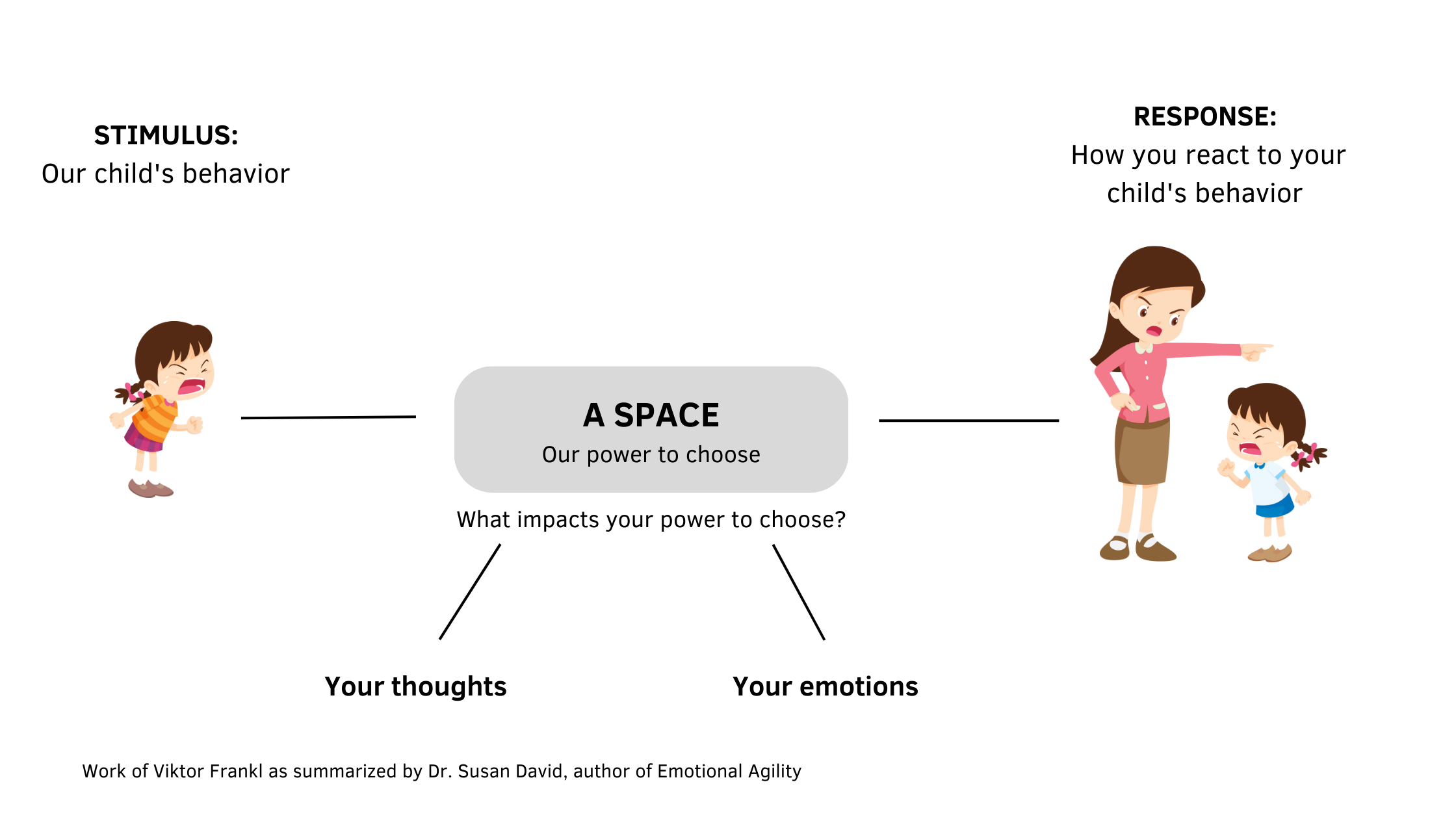How do I manage my child’s child’s difficult behavior
Parents often ask me how to manage their child’s difficult behaviors. What if we were to reframe the question to ask, “How do I manage my own emotions when my child displays difficult behavior?”.
When our child displays challenging behavior, it can be difficult as a parent to see past it. Their behavior either triggers our negative self-talk, triggers our past trauma, adds to our stress and overwhelm, makes us feel less than, or makes us feel frustrated and annoyed.
Our internal response to our child’s behavior will infuence our external response…even if this is not, particularly the best response. In fact, we often don’t respond to our child’s beahvior, but rather we react. For example, our toddler throws a toy because they feel mad that we said it’s bedtime and we only see the behavior (throwing a toy) and immediately get mad our child and discipline them. In reality, we should respond to the emotion underneath the behavior (which doesn’t mean ignoring the misbehavior we are trying to change). They might have thrown the toy because they were frustrated, upset, confused etc. This is often forgotten when we discipline. This plays a very large role in their emotional development.
What if we would address the same situation (toddler throwing a toy) and ask ourselves “How do I manage my emotions when my child displays difficult behavior?”
Curious Neuron Podcast: How to respond to your child rather than react
Listen to this podcast episode on Spotify
Why we should address our emotions before addressing our child’s behavior
Dr. Susan David’s book, Emotional Agility, is a transformative guide to navigating life’s challenges by embracing emotional flexibility and self-awareness. In Mayim Bialik’s podcast, Breakdown (click here for the Youtube video) she explains how we actually have the power to choose how we respond to an emotional stimulus.
Let’s use the image below to help us understand what Dr. David describes in the short clip below (the original source she is describing is from Viktor Frankl’s book called A Man’s Search for Meaning. The stimulus is our child’s behavior or “misbehavior”. The response to that stimulus is us, the parent. However, the important part of all of this is actually the space between the stimulus and response. It is in this exact space that you can make a decision to respond to their needs rather than react. However, this is the hardest part because many internal aspects (our thoughts and emotions) can take over this space. If we have been told since childhood that we are not good enough, it is easy to let this thought take over the space and control our response. If we are feeling overwhelmed, mad, or anxious, these feelings block us from responding accordingly to our child. As Dr. David explains in her book, we get hooked on these thoughts and emotions and can’t get to the response part.

How can you start responding to your child rather than reacting?
If you struggle with reacting to your child’s behaviour rather than responding, try first gaining some awareness as to what your thoughts or feelings are when your child exhibits a specific behavior (whining, tantrum, ignoring, yelling etc). After you snap or yell at your child, make a note of what happened and how their behavior impacted you. Or perhaps the behaviour didn’t impact you but something that happened earlier in the day (partner or family said something).
Curious Neuron Resources:
How to improve your self-compassion model as a parent (Podcast Episode)
Ask yourself: Why am I yelling at my kids? (Podcast Episode)



